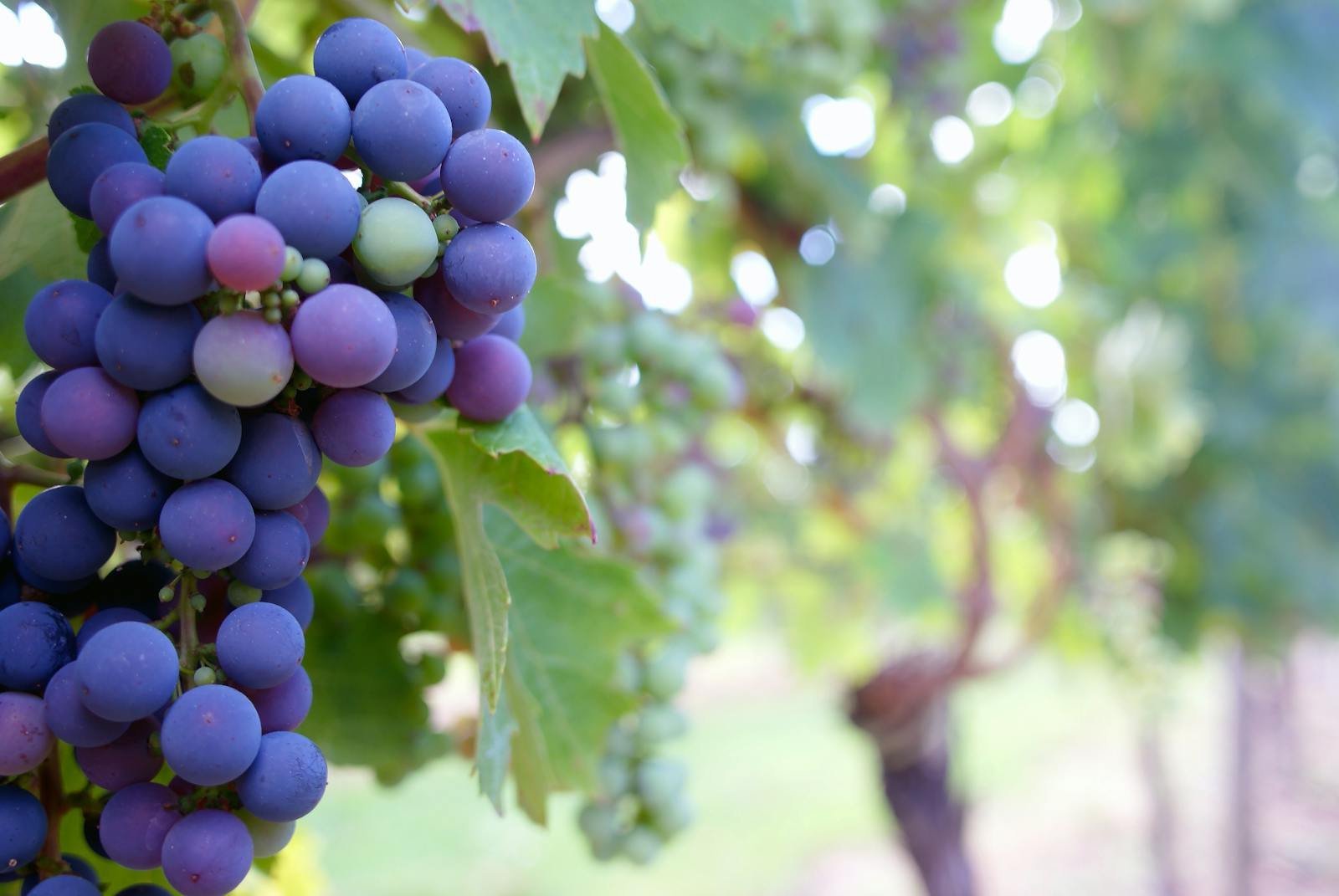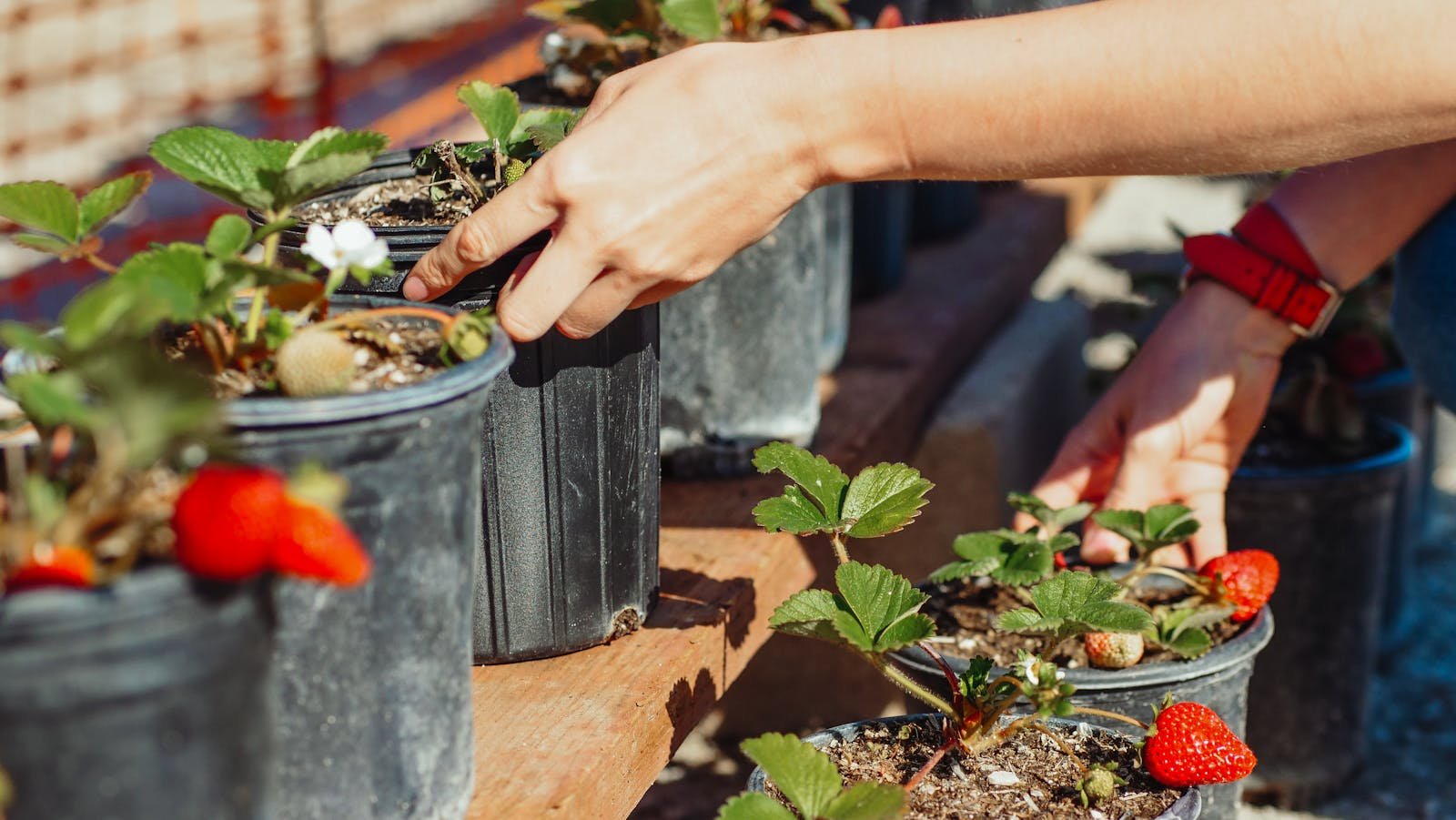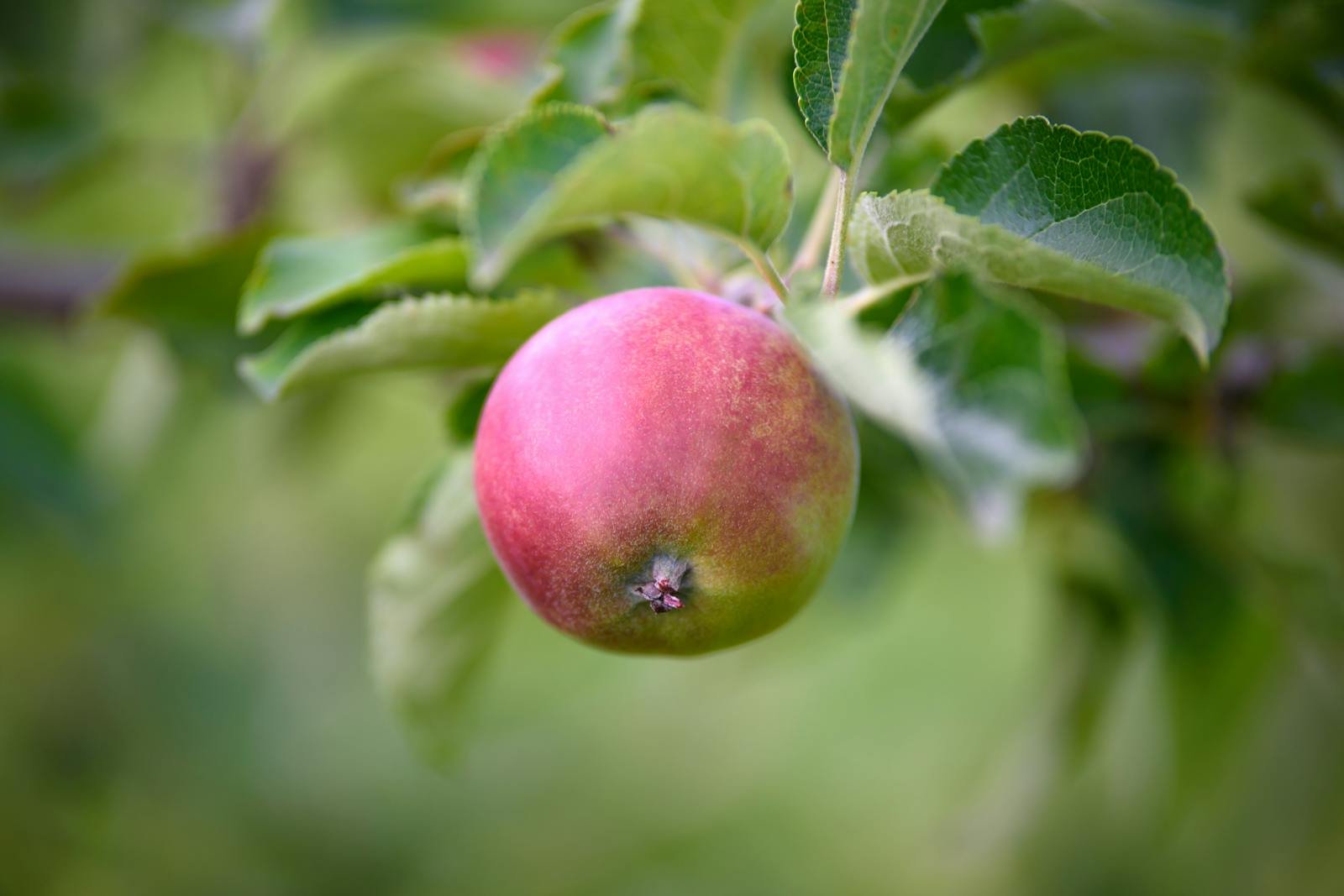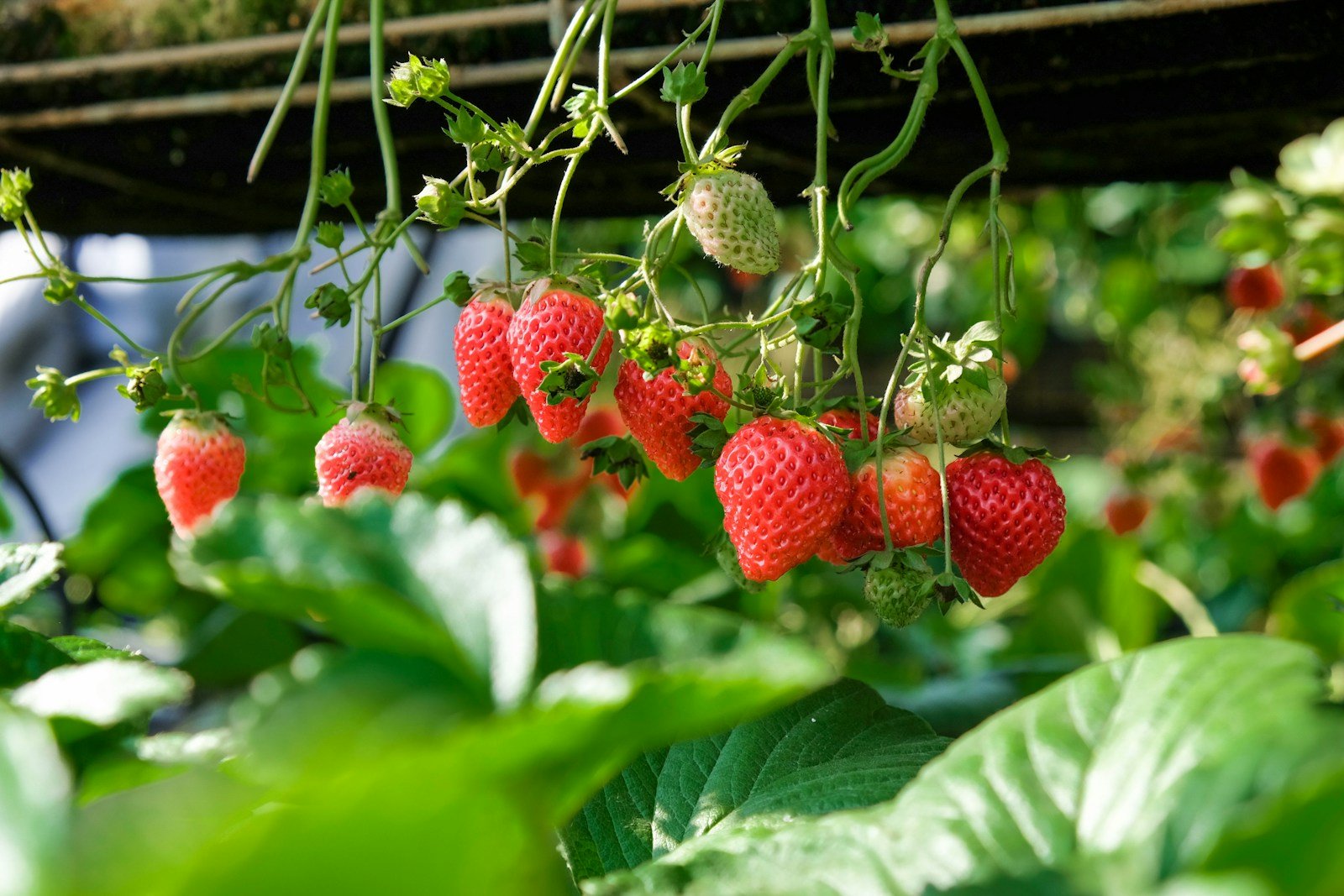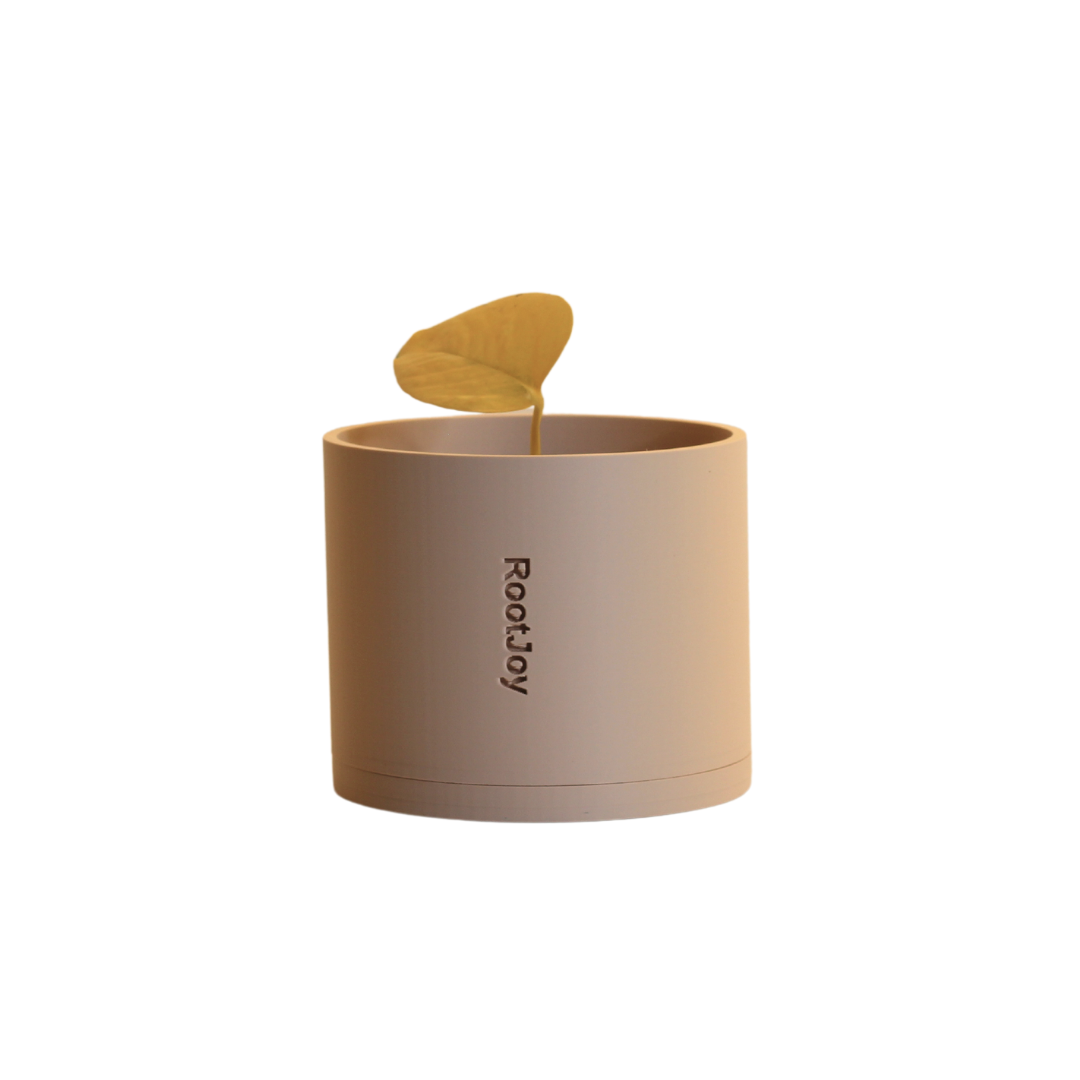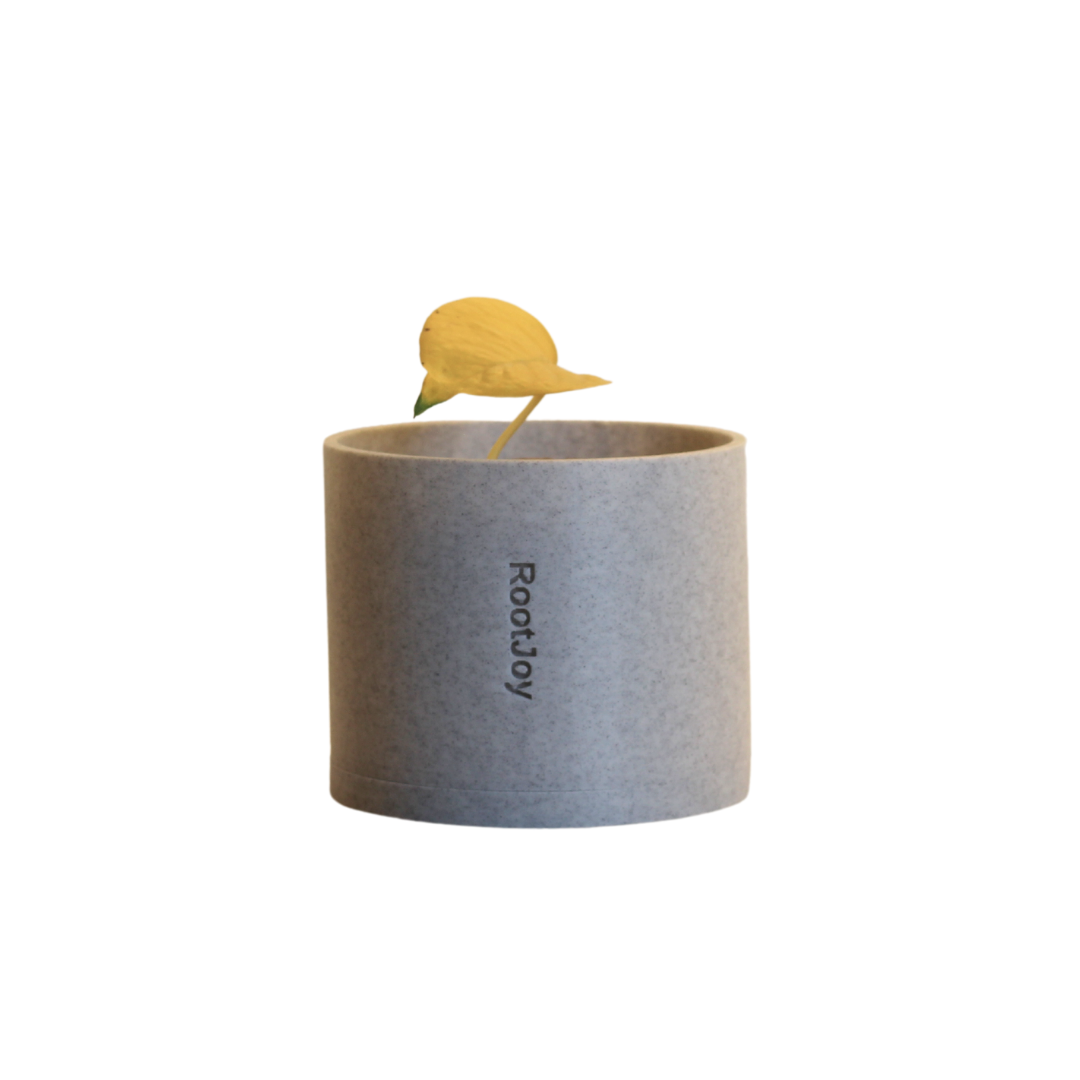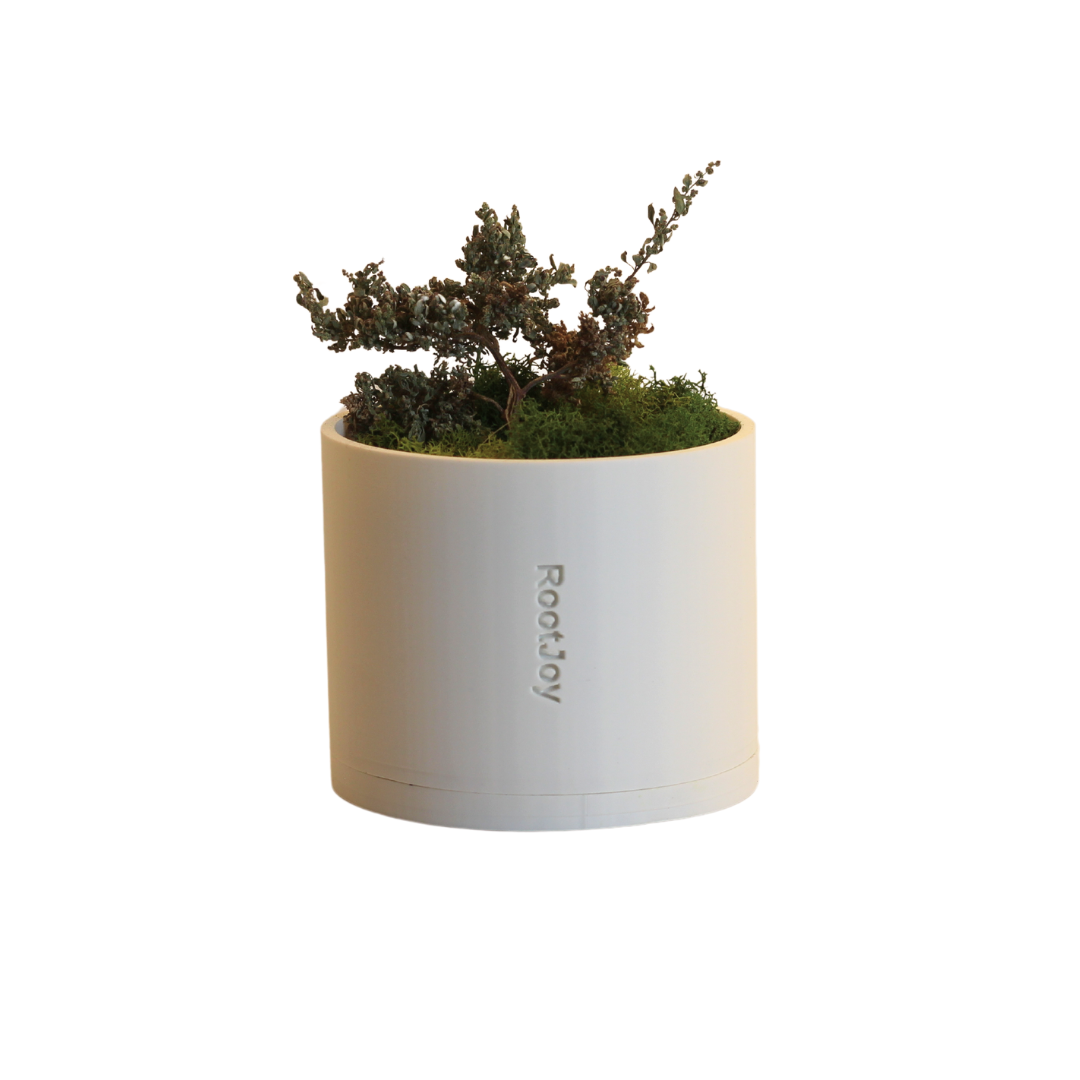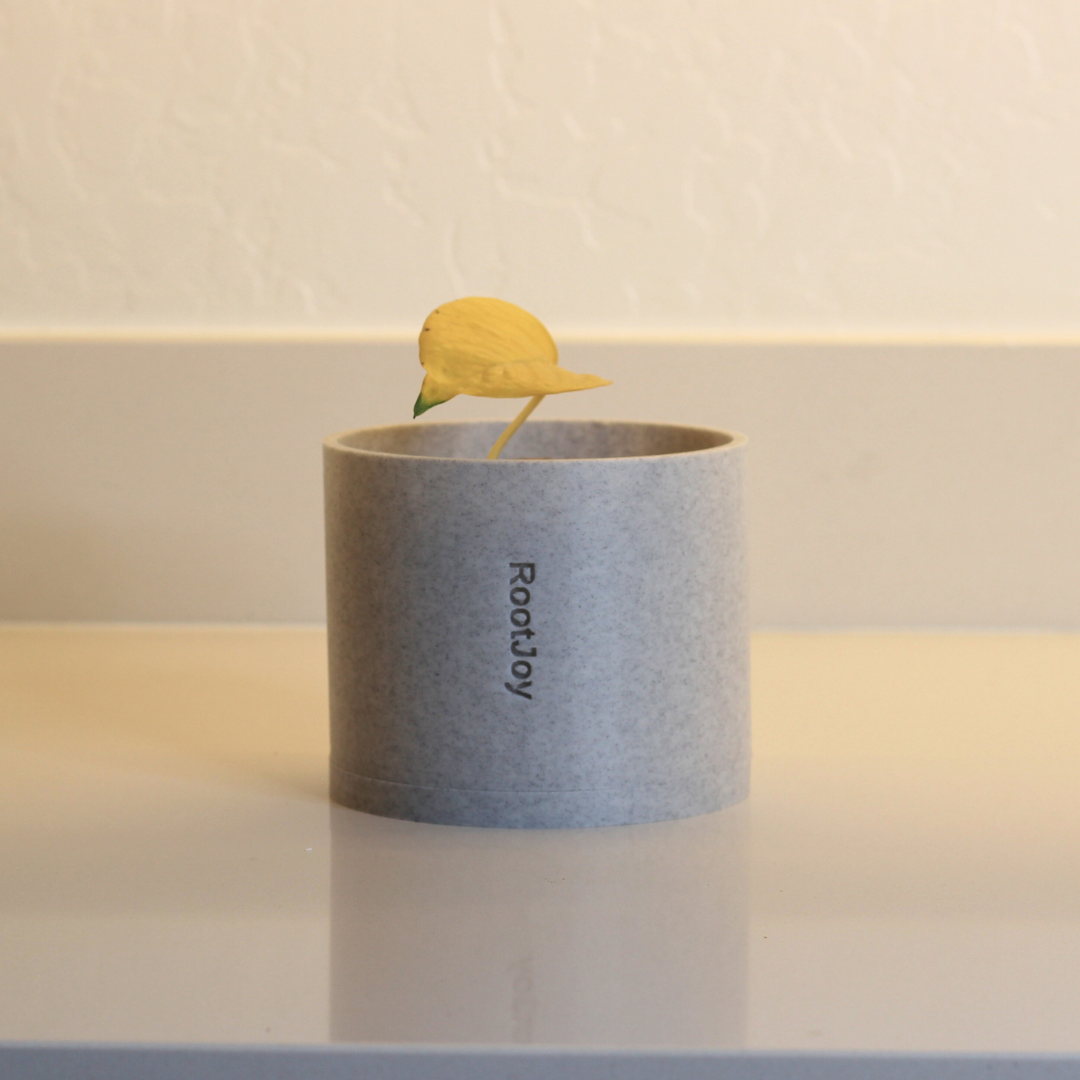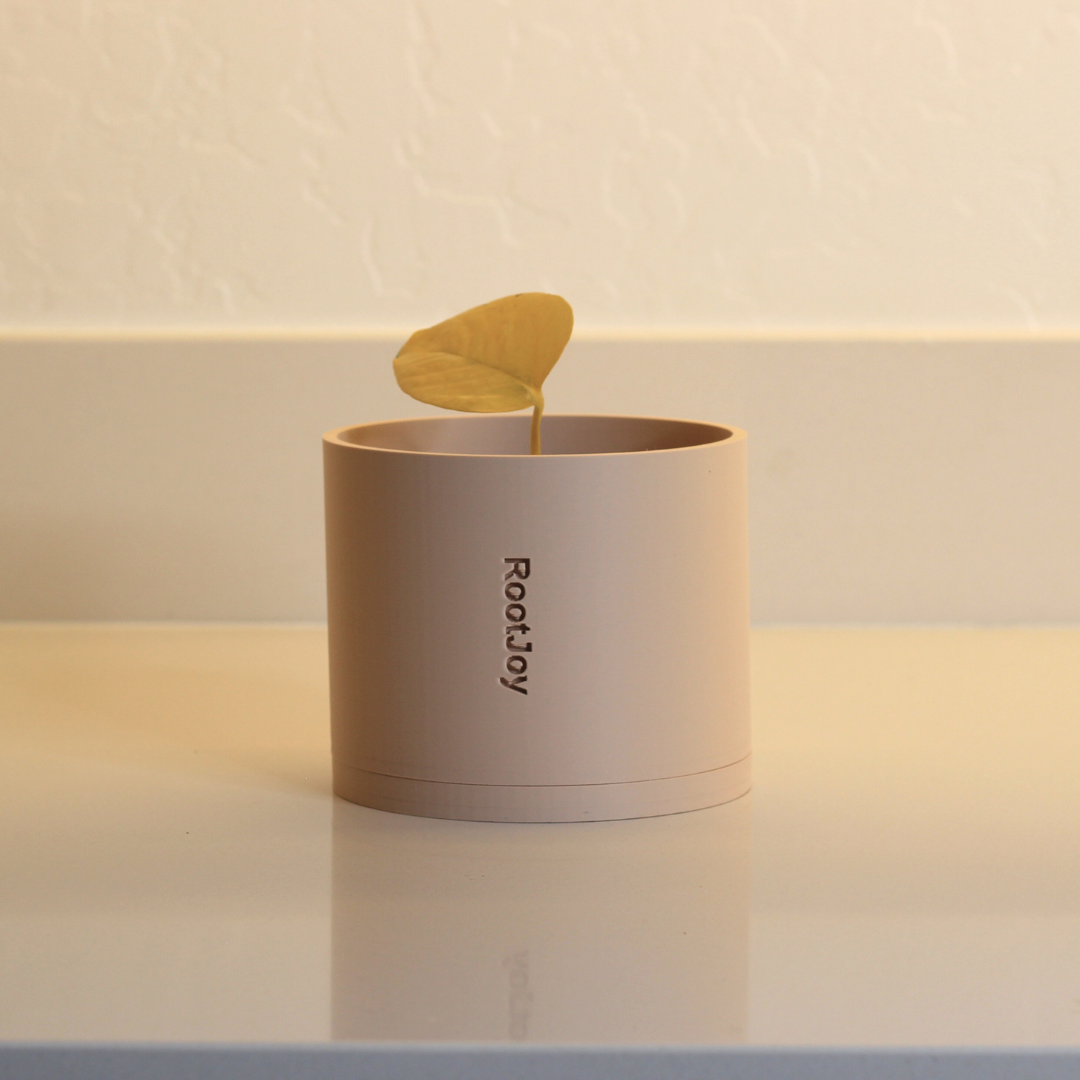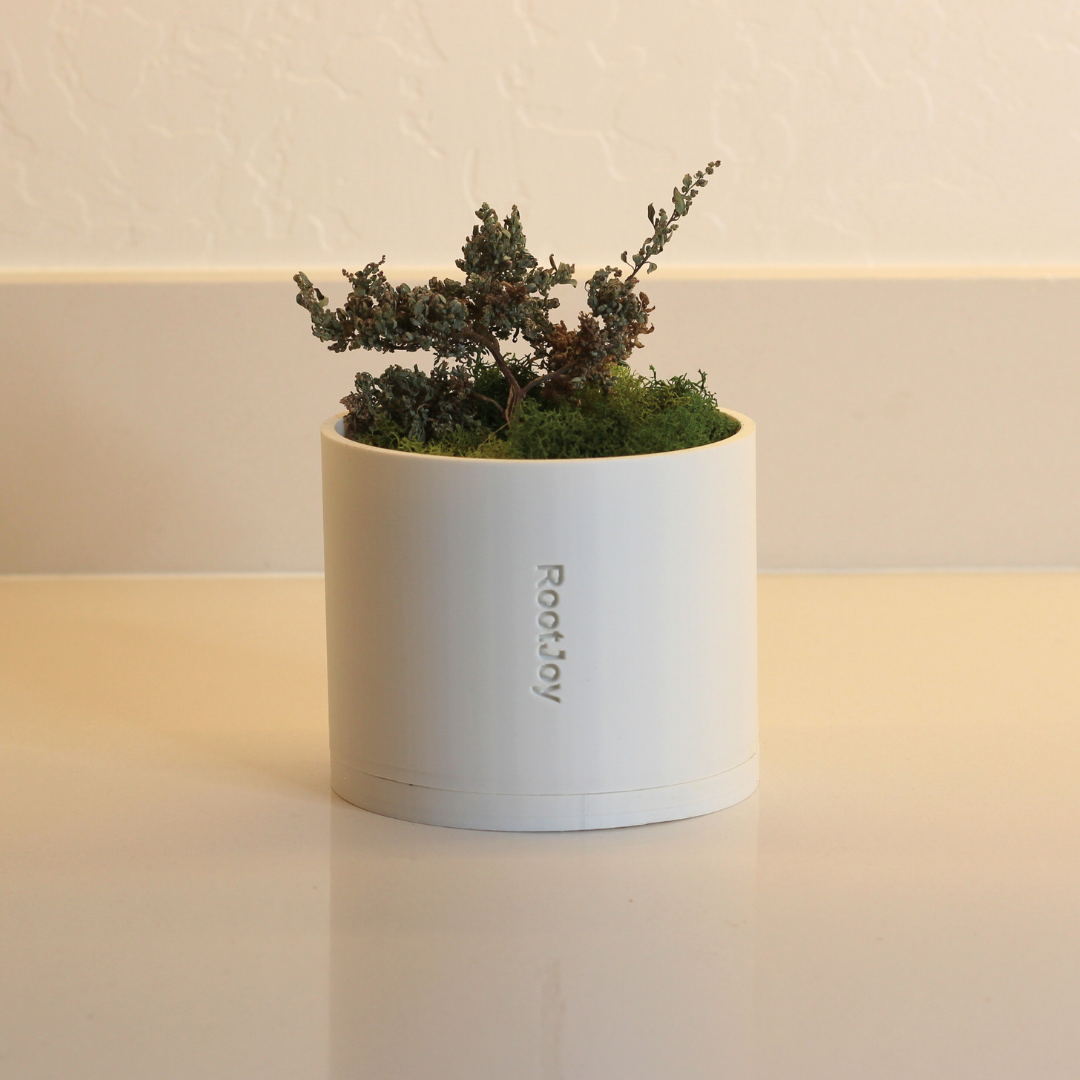Fruit Plants
🌱 Overall Growability Score
Explore a variety of fruit plants types and learn how to grow them successfully. From citrus trees to berries, find expert tips for planting, care, and harvesting.
Fruit Plants
🌱 Overall Growability Score
Explore a variety of fruit plants types and learn how to grow them successfully. From citrus trees to berries, find expert tips for planting, care, and harvesting.
Fruit Plants Insights
🌱 Overall Growability Score
🛒 Availability Score
🌿 Sustainability Score
📈 Yield Potential Score
☀️ Light Requirement Score
💧 Water Efficiency Score
🦠 Pest & Disease Resistance Score
❄️ Climate Adaptability Score
🪴 Space Efficiency Score
🌍 Rarity Score
💰 Cost Score
Overview:
Description
🍋 Selecting the Best Citrus Trees for Your Garden
🌱 Choosing the Ideal Soil for Fruit Plants
Use well-drained, nutrient-rich soil with a pH between 6.0 and 7.0 for most fruit plants.
🌞 Understanding Sunlight Requirements for Fruit Plant Growth
Ensure fruit plants receive 6–8 hours of sunlight daily for optimal growth.
💧 Efficient Watering Tips for Fruit Trees and Bushes
Water deeply once a week to encourage strong root systems, especially during dry seasons.
🍓 Growing Berries Successfully in Small Spaces
Plant compact varieties like Alpine strawberries or dwarf raspberries in containers.
🪴 Tips for Container Gardening with Fruit Plants
Use pots with good drainage and high-quality potting soil for container-grown fruits.
🌡️ Protecting Fruit Plants from Temperature Extremes
Use frost covers in winter and shade cloth during extreme heat to protect sensitive plants.
🐝 Attracting Pollinators to Boost Fruit Yields
Plant flowers like lavender and marigolds nearby to invite bees and butterflies.
🍑 Pruning Techniques for Stone Fruits
Prune during dormancy to remove dead branches and improve air circulation.
🌸 Fertilizing Fruit Plants for Healthy Growth and Maximum Yield
Apply organic fertilizers like compost or fish emulsion during the growing season.
🌳 Companion Planting to Support Fruit Trees
Plant nitrogen-fixing companions like clover or beans around fruit trees for healthier growth.
🪵 Benefits of Mulching Around Fruit Plants
Apply a 2–3 inch layer of organic mulch to retain moisture and regulate soil temperature.
🛡️ Preventing and Managing Common Fruit Plant Pests
Use neem oil or introduce beneficial insects like ladybugs to control pests.
🦋 Encouraging Beneficial Insects for Natural Pest Control
Create a habitat with diverse plants to attract predatory insects like lacewings.
🌦️ Seasonal Care Routines for Fruit Plants
Adjust watering, pruning, and feeding schedules based on seasonal needs.
🧑🌾 Supporting Heavy Branches on Fruit-Laden Trees
Use wooden stakes or soft ties to support branches loaded with fruit.
🥭 Growing Exotic and Tropical Fruits in Your Region
Try guava, avocado, or passionfruit if you live in USDA zones 9–11.
🍎 Harvesting Fruits at Their Peak Ripeness
Pick fruits when they’re fully colored, firm, and fragrant for the best taste.
❄️ Overwintering Techniques for Fruit Plants in Cold Zones
Wrap young trees or container plants in burlap to protect them from frost.
🌍 Selecting the Right Fruit Plants for Your USDA Growing Zone
Match your zone to recommended plants to ensure healthy growth and productivity.
🐦 Protecting Fruit from Birds and Other Wildlife
Cover plants with bird netting or install scare devices like reflective tape.
🍊 Growing Citrus Indoors with Success
Place pots in a sunny window and mist leaves regularly to maintain humidity.
🌱 Starting Fruit Plants from Seeds
Save seeds from fruits, dry them, and plant them in moist soil for germination.
🍇 Trellising Grapevines and Climbing Fruit Plants
Use sturdy trellises to train vines and improve fruit quality.
🌾 Using Cover Crops to Enhance Soil in Fruit Gardens
Plant clover or vetch to enrich soil and prevent erosion.
🧼 Natural Remedies for Fungal Problems in Fruit Plants
Apply a baking soda spray to prevent powdery mildew and other fungal diseases.
🥤 Drip Irrigation Benefits for Efficient Fruit Plant Watering
Reduce water waste and deliver moisture directly to the roots with a drip system.
🏡 Designing a Fruit Garden Layout for Productivity
Space plants properly for air circulation and sunlight, and group them by water needs.
🔄 Crop Rotation Strategies for Perennial and Annual Fruits
Rotate annual fruits to prevent soil-borne diseases and nutrient depletion.
🛠️ DIY Fruit Plant Supports, Trellises, and Structures
Build simple supports with bamboo stakes or repurposed materials for climbing fruit plants.
Climate and Growing Conditions for Fruit Plant Types
Understanding the climate and growing conditions for fruit plant types is essential for achieving healthy growth and abundant harvests. Each fruit plant has specific requirements for temperature, sunlight, soil, and water that vary based on its natural habitat and hardiness zone.
1. Temperature and Hardiness Zones
- Fruit plants are classified based on their ability to withstand temperature extremes, defined by USDA Hardiness Zones:
- Tropical Fruits (e.g., mangoes, bananas, papayas): Thrive in zones 10-11 with consistently warm temperatures and no frost.
- Citrus Fruits (e.g., lemons, oranges): Prefer zones 9-11, needing mild winters and warm summers.
- Berries (e.g., strawberries, blueberries): Grow best in cooler zones 3-8, depending on the variety.
- Stone Fruits (e.g., peaches, cherries): Require cold winters (zones 5-9) for proper dormancy and fruiting.
- Grapes: Adaptable to zones 6-10, with warm summers for optimal sugar production in fruit.
2. Sunlight Requirements
- Most fruit plants need full sun (6-8 hours of direct sunlight daily) to produce high yields and maintain healthy growth.
- Some varieties, such as blueberries, can tolerate partial shade, especially in hotter climates, but fruit production may decrease.
3. Soil Preferences
- Well-Drained Soil: Essential for most fruit plants to prevent root rot.
- pH Levels:
- Blueberries: Require acidic soil (pH 4.5-5.5).
- Citrus and Stone Fruits: Prefer slightly acidic to neutral soil (pH 6.0-7.0).
- Enrich soil with organic matter such as compost or aged manure to boost fertility and water retention.
4. Watering Needs
- Fruit plants need consistent watering during their growing and fruiting stages:
- Tropical Fruits: High water demand due to rapid growth in warm climates.
- Berries: Require evenly moist soil, especially during fruit development.
- Drought-Tolerant Plants: Figs and pomegranates need less frequent watering once established.
5. Humidity and Airflow
- Tropical fruits thrive in high humidity, while many temperate fruits (e.g., apples, cherries) prefer moderate humidity levels.
- Good airflow reduces the risk of fungal diseases, particularly in humid regions. Prune plants regularly to promote air circulation.
6. Seasonal Considerations
- Spring: Plant new fruit trees and bushes; focus on pruning and soil preparation.
- Summer: Maintain soil moisture and harvest early fruits.
- Fall: Plant cool-season crops like berries; prepare soil with organic matter.
- Winter: Protect plants from frost and prune dormant trees.
Understanding these growing conditions and tailoring your approach to the specific needs of your chosen fruit plant types will set your garden up for success. 🌱
Planting and Care Tips for Fruit Plant Types
Successfully growing fruit plants involves proper planning, planting, and care. Following these tips will help ensure your fruit plants thrive and produce abundant harvests, whether you’re growing citrus, berries, or stone fruits.
1. Choosing the Right Fruit Plant
- Consider Your USDA Zone: Select plants that are suited to your hardiness zone to ensure they can withstand local temperatures.
- Space Requirements: Choose compact or dwarf varieties for smaller gardens or container planting.
- Pollination Needs: Some plants, like apples and cherries, require cross-pollination, so you may need to plant multiple varieties.
2. Preparing the Soil
- Test your soil pH and adjust it to suit your chosen fruit plant:
- Acidic Soil: Suitable for blueberries and cranberries (pH 4.5-5.5).
- Neutral Soil: Ideal for citrus and stone fruits (pH 6.0-7.0).
- Add compost, aged manure, or organic fertilizers to enrich the soil with essential nutrients.
3. Planting Tips
- Timing:
- Plant in early spring after the last frost, or in fall in milder climates.
- Spacing:
- Provide ample space between plants for air circulation and growth.
- Example: Citrus trees need 8-12 feet of spacing, while berry bushes need 3-5 feet.
- Depth:
- Dig a hole twice as wide as the root ball and deep enough to cover the roots without burying the trunk or crown.
4. Watering Tips
- Water deeply and consistently, especially during the growing season:
- New Plants: Water frequently until roots are established.
- Established Plants: Deep watering once a week is sufficient.
- Avoid waterlogging by ensuring well-drained soil.
5. Mulching
- Apply a 2-3 inch layer of organic mulch (e.g., straw, wood chips) around the base of the plant to:
- Retain soil moisture.
- Regulate soil temperature.
- Suppress weeds.
6. Pruning and Maintenance
- Prune fruit plants annually to:
- Remove dead or diseased branches.
- Encourage air circulation and sunlight penetration.
- Shape the plant for easier harvesting.
- Perform pruning during dormancy for most plants (winter to early spring).
7. Fertilizing
- Use organic fertilizers like compost, fish emulsion, or slow-release granules to feed your plants:
- Citrus: Fertilize 3-4 times a year during active growth.
- Berries: Fertilize in early spring and midsummer.
- Avoid over-fertilizing, which can lead to excessive foliage and reduced fruit production.
8. Pest and Disease Control
- Monitor for common pests like aphids, spider mites, and fruit flies:
- Use neem oil or insecticidal soap for natural pest control.
- Encourage beneficial insects like ladybugs and lacewings.
- Prevent fungal diseases by pruning for airflow and avoiding overhead watering.
9. Supporting Plants
- Use stakes or trellises for climbing plants like grapes or heavy-fruiting trees.
- Support branches laden with fruit to prevent breakage.
10. Harvesting
- Harvest fruits when they are fully ripe for the best flavor and nutritional value:
- Look for full color, firmness, and aroma.
- Handle fruits gently to avoid bruising and store them properly to extend their shelf life.
By following these planting and care tips, you’ll be able to grow healthy fruit plants and enjoy bountiful harvests season after season. 🌱
Seasonal Planting and Harvesting for Fruit Plant Types
Seasonal planting and harvesting play a crucial role in the success of fruit gardening. Different fruit plants thrive in specific seasons, and understanding the best times to plant and harvest ensures healthy growth and productive yields.
1. Spring: Planting Season
Ideal for: Establishing new fruit plants, preparing the soil, and encouraging active growth.
- What to Plant:
- Citrus: Start planting lemons, oranges, and limes in early spring.
- Berries: Plant strawberries, raspberries, and blueberries in well-drained soil.
- Stone Fruits: Plant peaches, plums, and cherries after the last frost.
- Tasks:
- Prune dormant trees to encourage new growth.
- Fertilize fruit plants to support active growth.
- Mulch to retain moisture and prevent weeds.
2. Summer: Maintenance and Early Harvest
Ideal for: Maintaining soil moisture, managing pests, and harvesting summer fruits.
- What to Harvest:
- Berries: Strawberries, raspberries, and blackberries ripen in early summer.
- Stone Fruits: Peaches, nectarines, and cherries are ready for picking.
- Grapes: Early varieties may begin ripening in late summer.
- Tasks:
- Water deeply and regularly, especially during dry spells.
- Protect fruit from birds with netting.
- Prune lightly to remove dead or damaged branches.
3. Fall: Harvesting and Planting for Next Year
Ideal for: Harvesting late-season fruits and preparing for winter.
- What to Harvest:
- Apples and Pears: These reach peak ripeness in the fall.
- Figs: Late-season figs are ready for picking.
- Citrus: Begin harvesting early oranges and lemons.
- What to Plant:
- Cooler climates: Plant strawberries for early spring harvests.
- Add organic matter to enrich soil for winter.
- Tasks:
- Mulch around the base of plants to protect roots from temperature fluctuations.
- Clean up fallen fruits and debris to prevent pests and diseases.
4. Winter: Rest and Protection
Ideal for: Pruning, frost protection, and soil preparation.
- What to Plant:
- None for most climates, but in milder zones (9-11), you can continue planting citrus or tropical fruits.
- Tasks:
- Prune dormant trees, such as apples and cherries, to shape and remove dead wood.
- Protect sensitive plants with frost cloth or burlap in colder regions.
- Prepare soil for spring by incorporating compost or manure.
Seasonal Calendar Overview
| Season | Planting | Harvesting | Key Tasks |
|---|---|---|---|
| Spring | Citrus, berries, stone fruits | None | Prune, fertilize, mulch, plant new trees |
| Summer | None | Berries, stone fruits, early grapes | Water, protect from pests, harvest ripe fruits |
| Fall | Strawberries (cool zones) | Apples, pears, figs, late citrus | Mulch, enrich soil, clean debris |
| Winter | Citrus (mild zones) | None | Prune, protect from frost, prepare soil |
By aligning your planting and harvesting activities with seasonal cycles, you can maximize fruit plant health and yield, ensuring a productive garden year-round. 🌱
Urban and Small-Space Fruit Gardening
Urban and small-space fruit gardening is a rewarding way to grow your own fresh produce, even if you have limited outdoor space. With the right techniques, tools, and plant choices, you can transform balconies, patios, rooftops, or small yards into thriving fruit gardens.
1. Choosing the Right Fruit Plants
Selecting plants suited for small spaces is the first step to success:
- Dwarf Varieties: Many fruit trees, such as dwarf lemons, oranges, and apples, are bred to grow in compact forms while still producing full-sized fruits.
- Bush Fruits: Strawberries, blueberries, and raspberries are excellent for pots or raised beds.
- Trellised Plants: Grapevines, passionfruit, and kiwis can grow vertically, saving ground space.
- Container-Friendly Plants: Figs, dwarf peaches, and calamondins thrive in pots.
2. Container Gardening for Fruit Plants
Container gardening is a versatile solution for urban spaces:
- Containers:
- Use large pots (at least 15 gallons for trees) with good drainage.
- Lightweight materials like plastic or fiberglass are easier to move.
- Soil:
- Use high-quality, well-draining potting mix.
- Add compost or slow-release fertilizer for nutrients.
- Placement:
- Ensure containers receive at least 6 hours of sunlight daily.
- Place them near walls or trellises for added support.
3. Vertical Gardening Solutions
Maximize space by growing fruit plants vertically:
- Trellises and Arbors:
- Train climbing plants like grapes or passionfruit on trellises or arbors.
- Hanging Baskets:
- Grow strawberries in hanging baskets to save floor space.
- Wall-Mounted Planters:
- Use vertical garden systems for herbs and compact fruits.
4. Rooftop and Balcony Gardening
Rooftops and balconies offer unique opportunities for fruit gardening:
- Weight Considerations:
- Use lightweight containers and materials to avoid overloading the structure.
- Wind Protection:
- Install windbreaks or place plants near walls to shield them from strong gusts.
- Irrigation:
- Consider drip irrigation systems for consistent watering, especially in sunny locations.
5. Maintenance Tips for Small Spaces
- Pruning:
- Regularly prune plants to maintain their size and encourage fruit production.
- Soil Health:
- Refresh container soil annually to prevent nutrient depletion.
- Pest Control:
- Inspect plants frequently for pests like aphids or spider mites and use natural remedies like neem oil or insecticidal soap.
- Watering:
- Monitor soil moisture closely, as containers dry out faster than ground soil.
6. Benefits of Urban Fruit Gardening
- Fresh Produce: Enjoy organic, homegrown fruits free of chemicals.
- Eco-Friendly: Reduce your carbon footprint by growing locally instead of relying on store-bought produce.
- Well-Being: Gardening provides physical activity and mental relaxation, even in small urban environments.
- Aesthetic Appeal: Fruit plants add greenery, flowers, and seasonal interest to your space.
Best Fruits for Urban and Small-Space Gardens
| Fruit | Ideal Setup | Why It Works |
|---|---|---|
| Strawberries | Hanging baskets | Compact and fast-growing, ideal for small spaces. |
| Blueberries | Containers | Thrive in pots; attractive foliage year-round. |
| Lemons | Dwarf tree in a pot | Perfect for balconies; fragrant flowers and fruit. |
| Figs | Large containers | Drought-tolerant and productive in pots. |
| Grapes | Trellises | Grows vertically, maximizing limited space. |
Urban and small-space fruit gardening proves that you don’t need a sprawling yard to grow your own produce. With thoughtful planning and innovative solutions, you can enjoy fresh, homegrown fruits right from your urban oasis. 🌱
Sustainable Practices for Fruit Plant Gardening
Sustainable gardening focuses on growing fruit plants in a way that protects the environment, conserves resources, and promotes biodiversity. By adopting eco-friendly methods, you can create a productive fruit garden while minimizing your ecological footprint.
1. Composting for Soil Health
Composting kitchen and garden waste creates nutrient-rich organic matter for your soil:
- Benefits: Improves soil structure, increases water retention, and reduces the need for chemical fertilizers.
- How-To:
- Add fruit peels, vegetable scraps, grass clippings, and dry leaves to a compost bin.
- Turn the pile regularly to maintain aeration and speed up decomposition.
2. Water Conservation
Efficient water use is critical for sustainability:
- Drip Irrigation:
- Delivers water directly to the plant roots, reducing evaporation and runoff.
- Rainwater Harvesting:
- Collect rainwater in barrels to use during dry spells.
- Mulching:
- Apply a 2–3 inch layer of organic mulch around fruit plants to retain soil moisture and suppress weeds.
3. Organic Fertilizers and Soil Amendments
Replace synthetic fertilizers with natural alternatives:
- Use compost, worm castings, or aged manure to enrich the soil.
- Apply organic potassium and phosphorus sources, such as bone meal or banana peels, to support fruit development.
4. Pest Management with Natural Solutions
Reduce chemical pesticide use by adopting natural pest control:
- Encourage Beneficial Insects:
- Attract ladybugs, lacewings, and hoverflies to combat aphids and other pests.
- Neem Oil:
- Use neem oil sprays to deter pests without harming pollinators.
- Companion Planting:
- Plant marigolds, nasturtiums, or garlic near fruit plants to repel harmful insects.
5. Biodiversity and Pollinator Support
Enhance biodiversity to create a resilient ecosystem:
- Native Plants:
- Surround fruit plants with native flowers and shrubs to support local wildlife.
- Pollinator Habitats:
- Add bee hotels, birdhouses, and shallow water sources to attract bees, butterflies, and birds.
- Avoid Harmful Chemicals:
- Steer clear of pesticides and herbicides that harm pollinators.
6. Crop Rotation and Cover Crops
Prevent soil depletion and break pest cycles with these methods:
- Crop Rotation:
- Alternate fruit plants with nitrogen-fixing crops like beans or clover each season.
- Cover Crops:
- Plant cover crops such as vetch or rye in off-seasons to enrich the soil and reduce erosion.
7. Minimal Waste Practices
Reduce waste and reuse materials wherever possible:
- Recycled Containers:
- Use old pots, crates, or even repurposed buckets for container gardening.
- DIY Trellises:
- Build trellises or supports with reclaimed wood or other upcycled materials.
8. Energy-Efficient Practices
Conserve energy by using eco-friendly tools and techniques:
- Solar-Powered Tools:
- Use solar-powered irrigation systems or lights in your garden.
- Hand Tools:
- Replace gas-powered tools with manual or electric alternatives.
9. Long-Term Planning
Sustainable gardening is about creating a system that thrives over time:
- Perennial Fruits:
- Grow long-lasting fruit plants like figs, blueberries, and grapes, which require less annual replanting.
- Tree Spacing:
- Plant fruit trees at the proper spacing to ensure adequate sunlight and airflow, reducing disease risk.
Why Sustainable Practices Matter
- Environmental Benefits: Reduce chemical runoff, conserve water, and enhance soil health.
- Healthier Produce: Enjoy fruits free from harmful pesticides and synthetic fertilizers.
- Cost-Effectiveness: Save money by reusing materials, harvesting rainwater, and producing your own compost.
- Community Impact: Inspire others in your neighborhood to adopt eco-friendly gardening methods.
By incorporating these sustainable practices, you can grow a healthy, thriving fruit garden while supporting the planet. 🌱
Tools and Products for Fruit Plant Gardening
Equipping yourself with the right tools and products can make fruit gardening efficient, enjoyable, and productive. From essential tools to advanced resources, the right choices ensure a thriving garden with minimal effort.
1. Essential Gardening Tools
Every gardener needs a basic toolkit to manage fruit plants effectively:
- Pruning Shears: Essential for trimming dead or overgrown branches on fruit trees and bushes.
- Trowels and Spades: Use for planting, transplanting, and digging in tight spaces.
- Watering Solutions: Drip irrigation kits and watering cans help deliver moisture directly to your plants without wastage.
- Garden Gloves: Protect your hands during planting and pruning tasks.
- Soil Test Kits: Monitor pH levels and nutrient content to ensure optimal growing conditions for fruit plants.
2. Products for Healthier Plants
Boost your garden’s productivity with organic and eco-friendly products:
- Organic Fertilizers:
- Compost, fish emulsion, or bone meal provide essential nutrients without chemicals. Read Organic Fertilizerthis review.
- Mulch:
- Organic mulches like straw or bark chips retain soil moisture and suppress weeds.
- Natural Pest Control:
- Neem oil sprays and insecticidal soaps are effective against pests while being safe for pollinators.
3. Containers and Supports
For urban or small-space gardening, the right containers and supports are essential:
- Large Pots: Perfect for dwarf fruit trees like lemons or peaches.
- Hanging Baskets: Ideal for growing strawberries in limited spaces.
- Trellises and Stakes: Provide support for climbing plants like grapes or passionfruit.
4. Recommended Reading and Resources
Learning about best practices and innovative methods in fruit gardening can elevate your skills:
- Grow Food eBook:
A step-by-step guide to growing your own food, perfect for beginners and seasoned gardeners looking to optimize their fruit gardens. - Urban Farming eBook:
Explore modern techniques for sustainable farming in urban spaces, including container gardening and vertical systems. - Sustainable Agriculture eBook:
Learn about eco-friendly practices that enhance soil health, conserve water, and reduce environmental impact.
5. Digital Tools for Planning
Leverage technology to plan and maintain your fruit garden:
- Garden Planner Apps: Map out planting schedules and layouts.
- Weather Monitoring Tools: Stay updated on local weather to protect your plants from frost or heat.
- Online Guides: Access digital resources and videos for troubleshooting common issues.
Challenges and Solutions for Fruit Plant Gardening
Fruit plant gardening can be a rewarding experience, but it comes with its fair share of challenges. From environmental factors to pests and diseases, understanding these hurdles and implementing effective solutions can help ensure a thriving and productive garden.
1. Pests and Diseases
Challenge:
Fruit plants are prone to pests like aphids, spider mites, and fruit flies, as well as diseases like powdery mildew and root rot. These issues can stunt plant growth and reduce yields.
Solution:
- Natural Pest Control:
- Use neem oil or insecticidal soap to combat pests without harming pollinators.
- Introduce beneficial insects like ladybugs and lacewings to naturally manage pest populations.
- Preventive Measures:
- Prune plants to improve airflow and reduce fungal growth.
- Avoid overhead watering to prevent leaf diseases.
2. Unfavorable Weather Conditions
Challenge:
Extreme weather, including frost, heatwaves, and heavy rain, can damage fruit plants and disrupt growth cycles.
Solution:
- Frost Protection:
- Use frost cloths, burlap, or plastic covers to shield plants during cold snaps.
- Heat Management:
- Install shade cloth to protect plants during heatwaves.
- Mulch around the base of plants to retain soil moisture during dry periods.
- Water Management:
- Implement drip irrigation systems to ensure consistent moisture without overwatering.
3. Limited Space
Challenge:
Urban gardeners and those with small yards often face space constraints, limiting their ability to grow fruit plants.
Solution:
- Compact Varieties:
- Choose dwarf or bush varieties of fruit plants, such as dwarf lemons or compact blueberries.
- Vertical Gardening:
- Use trellises, arbors, or wall-mounted planters to grow climbing plants like grapes or passionfruit.
- Container Gardening:
- Grow fruit plants in pots or containers, which can be moved and managed easily in small spaces.
4. Soil Quality Issues
Challenge:
Poor soil fertility, drainage problems, and incorrect pH levels can inhibit the growth of fruit plants.
Solution:
- Improve Soil Quality:
- Enrich the soil with compost, aged manure, or organic fertilizers.
- Adjust pH:
- Use sulfur to lower soil pH for blueberries or lime to raise it for most other fruits.
- Enhance Drainage:
- Plant in raised beds or use sandy-loam soil mixtures for better water flow.
5. Pollination Problems
Challenge:
Fruit plants that require cross-pollination, such as apples and cherries, may fail to set fruit without adequate pollinators.
Solution:
- Encourage Pollinators:
- Plant flowers like lavender, marigolds, or wildflowers near your fruit garden to attract bees and butterflies.
- Hand Pollination:
- Use a small brush to transfer pollen between flowers if natural pollination is insufficient.
6. Nutrient Deficiencies
Challenge:
Fruit plants may show poor growth or yellowing leaves due to a lack of essential nutrients like nitrogen, potassium, or phosphorus.
Solution:
- Use Balanced Fertilizers:
- Apply organic fertilizers such as fish emulsion or bone meal to supply necessary nutrients.
- Regular Soil Testing:
- Test soil periodically to monitor nutrient levels and adjust fertilization as needed.
7. Wildlife Damage
Challenge:
Birds, deer, and squirrels can damage fruit plants and consume developing fruits.
Solution:
- Protective Netting:
- Cover fruit plants with bird netting or mesh to deter wildlife.
- Scare Devices:
- Use reflective tape, scarecrows, or motion-activated sprinklers to keep animals away.
- Fencing:
- Install low barriers around small plants or raised beds to prevent access by ground-dwelling animals.
Conclusion
Gardening challenges are inevitable, but they can be effectively managed with proactive strategies and natural solutions. By addressing these common issues, you can cultivate healthy, productive fruit plants while creating a sustainable and enjoyable gardening experience. 🌱
Frequently Asked Questions (FAQs) About Fruit Plant Gardening
1. What are the best fruit plants for beginners?
Answer:
Beginner-friendly fruit plants include strawberries, blueberries, and dwarf citrus trees like Meyer lemons. These plants are low-maintenance, grow well in containers, and produce reliable yields.
2. How much sunlight do fruit plants need?
Answer:
Most fruit plants require 6–8 hours of full sunlight daily. Some, like blueberries, can tolerate partial shade, but fruit production may be reduced.
3. Can I grow fruit plants indoors?
Answer:
Yes, certain fruit plants like dwarf citrus trees, strawberries, and figs can thrive indoors with proper care. Place them in a sunny spot, such as near a south-facing window, and use grow lights if needed.
4. How often should I water fruit plants?
Answer:
Fruit plants generally need deep watering once or twice a week, depending on the soil type and weather. Container plants may need more frequent watering as they dry out faster.
5. Do I need to fertilize my fruit plants?
Answer:
Yes, fertilizing fruit plants ensures healthy growth and productive yields. Use an organic, balanced fertilizer during the growing season and follow plant-specific recommendations.
6. What kind of soil is best for fruit plants?
Answer:
- Well-drained soil is essential for most fruit plants.
- pH levels vary:
- Blueberries need acidic soil (pH 4.5–5.5).
- Citrus and stone fruits prefer slightly acidic to neutral soil (pH 6.0–7.0). Adding compost or organic matter improves soil fertility and structure.
7. How can I protect fruit plants from pests?
Answer:
- Use natural remedies like neem oil or insecticidal soap.
- Attract beneficial insects, such as ladybugs, to control pests naturally.
- Install netting or mesh to deter birds and small animals.
8. What fruit plants can I grow in small spaces?
Answer:
- Dwarf fruit trees like lemons and apples are ideal for containers.
- Bush fruits like blueberries and raspberries thrive in compact spaces.
- Vertical-growing plants such as grapes and passionfruit maximize space with trellises.
9. When is the best time to plant fruit plants?
Answer:
The best time to plant fruit plants is in early spring after the last frost. In warmer climates, some plants like citrus trees can also be planted in the fall.
10. How do I know when to harvest fruit?
Answer:
- Harvest fruits when they are fully colored, firm, and aromatic.
- For berries, ensure they detach easily from the plant without resistance.
- Consult plant-specific guides for optimal ripening signs.
11. Can fruit plants survive in cold climates?
Answer:
Yes, many fruit plants are cold-hardy, such as apples, cherries, and blueberries. Protect sensitive plants with frost cloths or grow them in containers that can be moved indoors during freezing weather.
12. How long does it take for fruit plants to produce fruit?
Answer:
- Strawberries: Within 3–6 months of planting.
- Blueberries and raspberries: Typically within 1–2 years.
- Fruit trees (e.g., apples, citrus): 2–5 years, depending on the variety and care.
13. Do I need more than one plant for fruit production?
Answer:
Some fruit plants, like apples and cherries, require cross-pollination from another variety for fruit production. However, self-pollinating plants like citrus and peaches can produce fruit with just one plant.
14. How can I grow organic fruit?
Answer:
- Use organic fertilizers like compost or fish emulsion.
- Avoid chemical pesticides; instead, use natural pest control methods like neem oil or companion planting.
- Enrich the soil with organic matter and maintain healthy growing conditions.
15. What tools do I need for fruit gardening?
Answer:
Basic tools include pruning shears, trowels, watering cans, and gloves. For larger gardens, consider adding trellises for climbing plants and a soil tester to monitor pH and nutrient levels.
Have More Questions?
Explore in-depth guides and resources like the Grow Food eBook for practical tips, or check out our Urban Farming eBook for sustainable gardening methods. 🌱
Fruit Plants Finder
Fruit Plants Types
Sign up for Flobase Interactive
Explore the interactive world of flipbooks, eBooks, audiobooks and courses and join the global and personal growth revolution.
Gardening Fruit Plants and More
Get notified on when we post new plant types and more.
Fruit Plants Calendar 📅
| Fruit Plant | Ideal Zone | Planting Season | Harvest Season | Sunlight | Soil Type |
|---|---|---|---|---|---|
| Lemon | 9-11 | Spring | Fall | Full Sun | Well-Drained, Sandy-Loam |
| Strawberry | 4-8 | Spring | Late Spring to Early Summer | Full Sun | Rich, Well-Drained |
| Blueberry | 3-8 | Spring | Summer | Full Sun to Partial Shade | Acidic, Well-Drained |
| Mango | 10-11 | Spring | Summer | Full Sun | Well-Drained, Sandy |
| Apple | 4-8 | Spring | Fall | Full Sun | Well-Drained, Loamy |
| Peach | 5-9 | Spring | Summer | Full Sun | Well-Drained, Sandy-Loam |
| Grapes | 6-10 | Spring | Late Summer to Early Fall | Full Sun | Well-Drained, Sandy-Loam |
| Orange | 9-11 | Spring | Winter to Early Spring | Full Sun | Well-Drained, Sandy-Loam |
| Cherry | 5-9 | Spring | Early Summer | Full Sun | Well-Drained, Loamy |
| Fig | 7-10 | Spring | Late Summer to Early Fall | Full Sun | Well-Drained, Sandy-Loam |
Gardening Methods for Fruit Plants
Gardening Designs With Fruit Plants
Garden Themes With Fruit Plants
Best Cities for Fruit Plants
Gardening Seasons For Fruit Plants
Reviews of Fruit Plants
There are no reviews yet. Be the first one to write one.



